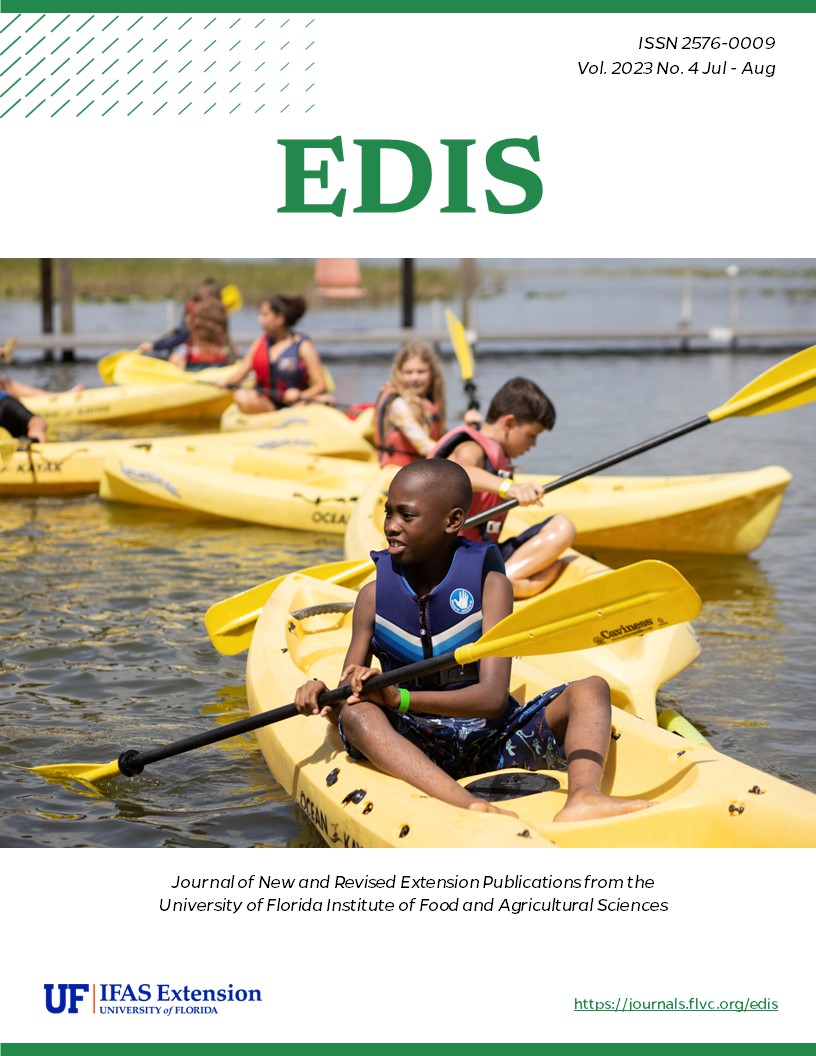Abstract
Recreational fishing, crucially important to Florida’s economy and ecosystems, can be affected by management decisions. Decisions that change the allowable harvest or the type of access to certain fishing areas are often expected to have strong effects on fishing effort, but the outcome of these actions is not always obvious. To provide greater insight into what may happen to fishing effort after management decisions, we describe case studies from the North American fisheries literature, some Florida-specific. These illustrate that the same or similar management actions (e.g., a more restrictive harvest policy) can have opposite effects on total fishing effort depending on the specifics of the case. We use this information as well as additional fisheries theory to explore a specific case study—what might happen if special harvest or access regulations were applied to a popular but ecologically and environmentally sensitive habitat—the St. Martins Marsh Aquatic Preserve in Citrus County, Florida.
References
Barry, S. C., K. N. Raskin, J. E. Hazell, M. C. Morera, and P. F. Monaghan. 2020. “Evaluation of Interventions Focused on Reducing Propeller Scarring by Recreational Boaters in Florida, USA. Ocean and Coastal Management.” Ocean and Coastal Management 186:105089. https://doi.org/10.1016/j.ocecoaman.2019.105089
Bohnsack, J.A. 2011. Impacts of Florida coastal protected areas on recreational world records for Spotted Seatrout, Red Drum, Black Drum and Common Snook. Bulletin of Marine Science 87:939–970. https://doi.org/10.5343/bms.2010.1072
Boxrucker, J. 2002. “Rescinding a 254-mm Minimum Length Limit on White Crappies at Ft. Supply Reservoir, Oklahoma: The Influence of Variable Recruitment, Compensatory Mortality, and Angler Dissatisfaction.” North American Journal of Fisheries Management 22:1340–1348. https://doi.org/10.1577/1548-8675(2002)022<1340:RAMMLL>2.0.CO;2
Callum, R. M., J. A. Bohnsack, F. Gell, J. P. Hawkins, and R. Goodridge. 2001. “Effects of Marine Reserves on Adjacent Fisheries.” Science 294:1920–1923. https://doi.org/10.1126/science.294.5548.1920
Camp, E. V., R. N. M. Ahrens, M. S. Allen, and K. Lorenzen. 2016. “Relationships between Angling Effort and Fish Abundance in Recreational Marine Fisheries.” Fisheries Management and Ecology 23 (3–4): 264–275. https://doi.org/10.1111/fme.12168
Camp, E. V., R. N. M. Ahrens, C. Crandall, and K. Lorenzen. 2018. “Angler Travel Distances: Implications for Spatial Approaches to Marine Recreational Fisheries Governance.” Marine Policy 87:263–274. https://doi.org/10.1016/j.marpol.2017.10.003
Camp, E. V., A. B. Collins, R. N. Ahrens, and K. Lorenzen. 2020. “Fish Population Recruitment: What Recruitment Means and Why It Matters” FA222. EDIS 2020 (2):6. https://doi.org/10.32473/edis-fa222-2020
Camp, E. V., D. D. Johnson, and M. D. Taylor. 2021. “Modelling the Potential Consequences of Adaptive Closure Management in a Penaeid Trawl Fishery.” Aquaculture and Fisheries. 8 (2): 190–201. https://doi.org/10.1016/j.aaf.2021.09.010
Camp, E. V., C. D. Court, A. Ropicki, and R. Botta. In Review. “Understanding Metrics for Communicating the Economic Importance of Florida's Fisheries.” EDIS 2023
Connell, S. D., M. Fernandes, O. W. Burnell, Z. A. Doubleday, K. J. Griffin, A. D. Irving, J. Y Leung, S. Owen, B. D. Russell, and L. J Falkenberg. 2017. “Testing for Thresholds of Ecosystem Collapse in Seagrass Meadows.” Conservation Biology 31 (5): 1196–1201. https://doi.org/10.1111/cobi.12951
Cornelius, R. R., and T. L. Margenau. 1999. “Effects of Length Limits on Muskellunge in Bone Lake, Wisconsin.” North American Journal of Fisheries Management 19:300–308, https://doi.org/10.1577/1548-8675(1999)019<0300:EOLLOM>2.0.CO;2
Florida Department of Environmental Protection. 2017. St. Martins Marsh Aquatic Preserve Management Plan. Florida Coastal Office, Tallahassee, Florida. 178 pp. http://publicfiles.dep.state.fl.us/CAMA/plans/St-Martins-Marsh-AP-Management-Plan.pdf
Guidettie, P., and J. Claudet. 2010. “Co-Management Practices Enhance Fisheries in Marine Protected Areas.” Conservation Biology 24:312–318. https://doi.org/10.1111/j.1523-1739.2009.01358.x
Hilborn, R., K. Stokes, J.-J. Maguire, T. Smith, L. W. Botsford, M. Mangel, J. Orensanz, et al. 2004. “When can marine reserves improve fisheries management?” Ocean and Coastal Management 47:197–205. https://doi.org/10.1016/j.ocecoaman.2004.04.001
Lester, S. E., B. S. Halpern, K. Grorud-Colvert, J. Lubchenco, B. I. Ruttenberg, S. D. Gaines, S. Airamié, and R. R. Warner. 2009. “Biological Effects within No-Take Marine Reserves: A Global Synthesis.” Marine Ecological Progress Series 384:33–46. https://doi.org/10.3354/meps08029
Lewin, W. C., R. Arlinghaus, and T. Mehner. 2006. “Documented and Potential Biological Impacts of Recreational Fishing: Insights for Management and Conservation.” Reviews in Fisheries Science 14 (4): 305–367. https://doi.org/10.1080/10641260600886455
Love, G., A. Braswell, A. B. Collins, and E. V. Camp. 2022. “Ecological Influences on Coastal Finfish Recruitment.” FA239 EDIS 2022 (3). https://doi.org/10.32473/edis-fa239-2022
Muoneke, M. I. 1994. “Dynamics of a Heavily Exploited Texas White Bass Population.” North American Journal of Fisheries Management 14 (2): 415–422 https://doi.org/10.1577/1548-8675(1994)014<0415:DOAHET>2.3.CO;2
NOAA, National Marine Fisheries Service. 2017. "Fisheries Economics of the United States, 2015." NOAA Tech. Memo. NMFS-F/SPO-170. U.S. Department of Commerce.
Newman, S. P., and M. H. Hoff. 2000. “Evaluation of a 16-Inch Minimum Length Limit for Smallmouth Bass in Pallette Lake, Wisconsin.” North American Journal of Fisheries Management 20:90–9 https://doi.org/10.1577/1548-8675(2000)020<0090:EOAIML>2.0.CO;2
Stevens, P. W., and K. J. Sulak. 2001. “Egress of Adult Sport Fish from an Estuarine Reserve within Merritt Island National Wildlife Refuge, Florida.” Gulf of Mexico Science 19(2). https://doi.org/10.18785/goms.1902.01
Stewart, K. R., R. L. Lewison, D. C. Dunn, R. H. Bjorkland, S. Kelez, P. N. Halpin, and L. B. Crowder. 2010. Characterizing Fishing Effort and Spatial Extent of Coastal Fisheries.” PLoS ONE 5 (12): e14451. https://doi.org/10.1371/journal.pone.0014451
van Poorten, B. T., and E. V. Camp. 2019. “Addressing Challenges Common to Modern Recreational Fisheries with a Buffet-Style Landscape Management Approach.” Reviews in Fisheries Science & Aquaculture 27 (4): 393–416. https://doi.org/10.1080/23308249.2019.1619071
Walters, C. J., R. Hilborn, and R. Parrish. 2007. “An Equilibrium Model for Predicting the Efficacy of Marine Protected Areas in Coastal Environments.” Canadian Journal of Fisheries and Aquatic Sciences 64 (7): 1009–1018. https://doi.org/10.1139/f07-072
Ward, H. G. M, M. S. Allen, E. V. Camp, N. Cole, L. M. Hunt, B. Matthias, J. R. Post, K. Wilson, and R. Arlinghaus. 2016. “Understanding and Managing Social-Ecological Feedbacks in Spatially Structured Recreational Fisheries: The Overlooked Behavioral Dimension.” Fisheries 41 (9): 524–535. https://doi.org/10.1080/03632415.2016.1207632
Whitfield, P. E., W. J. Kenworthy, K. K. Hammerstrom, and M. S. Fonseca. 2002. “The Role of a Hurricane in the Expansion of Disturbances Initiated by Motor Vessels on Seagrass Banks.” Journal of Coastal Research 86–99. https://www.jstor.org/stable/25736345
Whitfield, A. K. 2017. “The Role of Seagrass Meadows, Mangrove Forests, Salt Marshes and Reed Beds as Nursery Areas and Food Sources for Fishes in Estuaries.” Reviews in Fish Biology and Fisheries 27 (1): 75–110. https://doi.org/10.1007/s11160-016-9454-x

